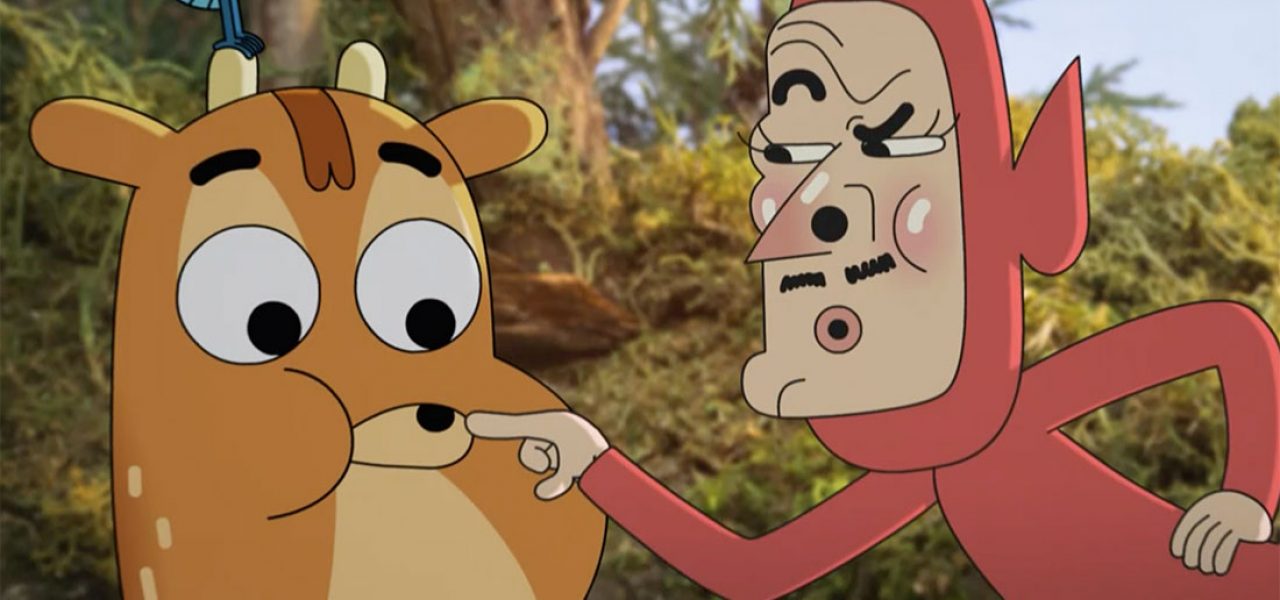

Meet The Creators Of ‘Prince Ivandoe,’ Cartoon Network’s First Danish Series (Exclusive Clip)
Cartoon Network’s latest animated series, The Heroic Quest of the Valiant Prince Ivandoe, premiered in its home country Denmark earlier this month. It’s the second time that the network has created an original show in Europe (the first being The Amazing World of Gumball).
Ivandoe consists of 10 episodes clocking in at 3 minutes each, in which young buck Ivandoe and his sidekick Bert the bird meet someone new in the woods. The episodes are being made available as part of a web game, in which players can quest with Ivandoe and Bert to unlock the cartoons. (It is also airing on Cartoon Network Nordic, which broadcasts to Sweden, Denmark, Norway, Finland, and Iceland.)
Exclusively for Cartoon Brew readers, we’ve unlocked a brief clip already:
Prince Ivandoe was created by young directors Christian Bøving-Andersen and Eva Lee Wallberg, graduates of The Animation Workshop and alumni of Gumball. From script to delivery, their show was produced in Denmark within a year.
We spoke to the creator/director duo via Skype to find out all about their and Ivandoe’s adventure.
A cozy fairytale world
The directors describe the show as an adventure in a fairytale world with a small, cozy feeling. The location and feel were heavily inspired by Scandinavian nature and culture, like author Astrid Lindgren’s Pippi Longstocking and Ronia the Robber’s Daughter, the Finnish Moomins, and old Danish folk tales. “We tried to give a Scandinavian touch to Prince Ivandoe – visually, but also in the tone and the humor,” Bøving-Andersen says. “So [Ivandoe’s forest] is not like a huge American forest. It’s more closed and has dense areas, where Ivandoe and Bert just walk around and meet a lot of strange characters.”
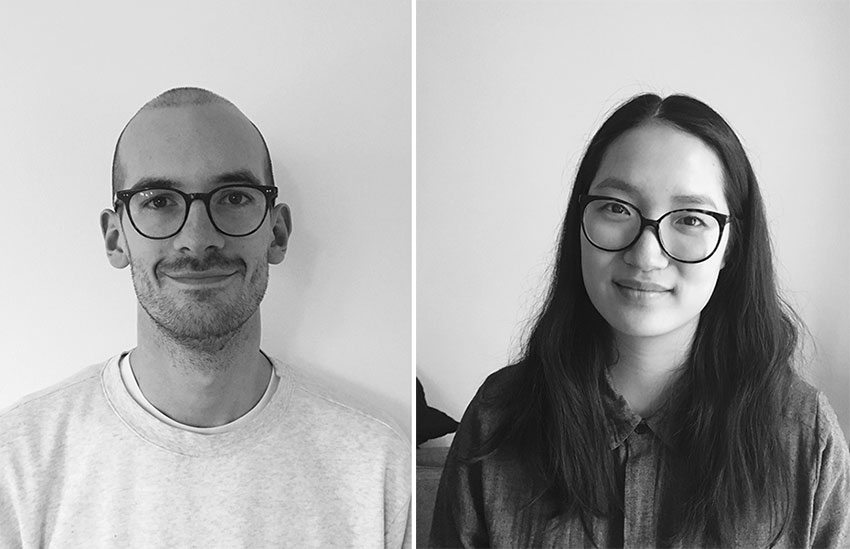
Prince Ivandoe’s team and pipeline were set up especially for the show at Copenhagen-based studio Sun Creature. When asked what European creators bring to the network, Wallberg suggested that Europeans “have a different point of view.”
Europeans’ stories and the way they are told, added Bøving-Andersen, will inevitably be different because Europeans have a different catalog of influences in their minds. “[As Danish people] we grew up with different kids’ books, shows, and films…So our references are different from a person in the U.S., or even the U.K. or France.” Ivandoe, both directors affirmed, would be a different show had it been made in another country or with another team.
Mixing cut-out, 2d, and miniature sets
The show’s 2d characters are set against a backdrop of miniature sets, made almost purely from natural materials, like twigs and herbs. “We felt that when you build these forests with the miniature sets, you get so much stuff for free that you can’t fake,” Bøving-Andersen explains. “You get the atmosphere, all the imperfections… You get all the natural light, shadow, and depth, and all the textures… It just gives it a very unique feeling. And it also, somehow, gives it more of a weird feeling. It feels more fairytale-ish.”
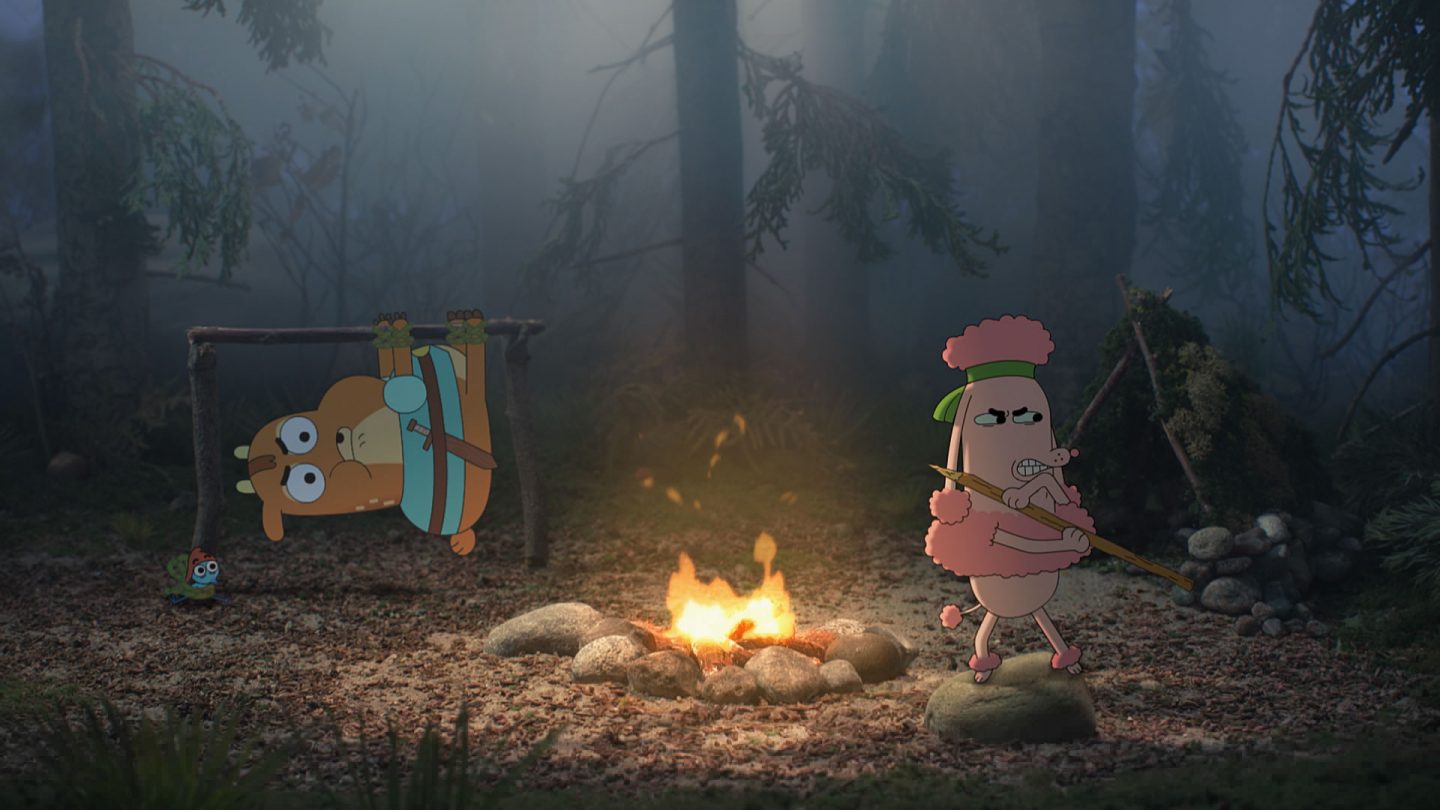
There’s another feeling the sets bring to the show, the co-creator says: the forest with its characters feels a bit like a garden with small toy figures. “You play around with the little figures in the garden and it feels like a big forest, a big world…That playful adventurous feeling, that’s what we wanted to achieve with the sets and the small characters walking around.”
About the animation technique, Wallberg explains, “It’s Flash animation – puppeted, but with hand-drawn animation as well.”
Adds Bøving-Andersen, “[This way, the characters] are always on model. It’s a special technique that they developed at The Amazing World of Gumball, that we used in our own way here.”
The clip below shows behind-the-scenes footage of the sets that were constructed for the series:
Seven pitches
While Wallberg and Bøving-Andersen worked on Cartoon Networks’ Gumball in London, they heard of an internal pitch opportunity at the network. Cartoon Network wanted to try a new, shorter format that could work online.
“It was a very long process actually,” Bøving-Andersen says, recalling they actually developed six other ideas before Prince Ivandoe. “Prince Ivandoe was just the final pitch.” The creators don’t feel all those pitches were a waste of time though.
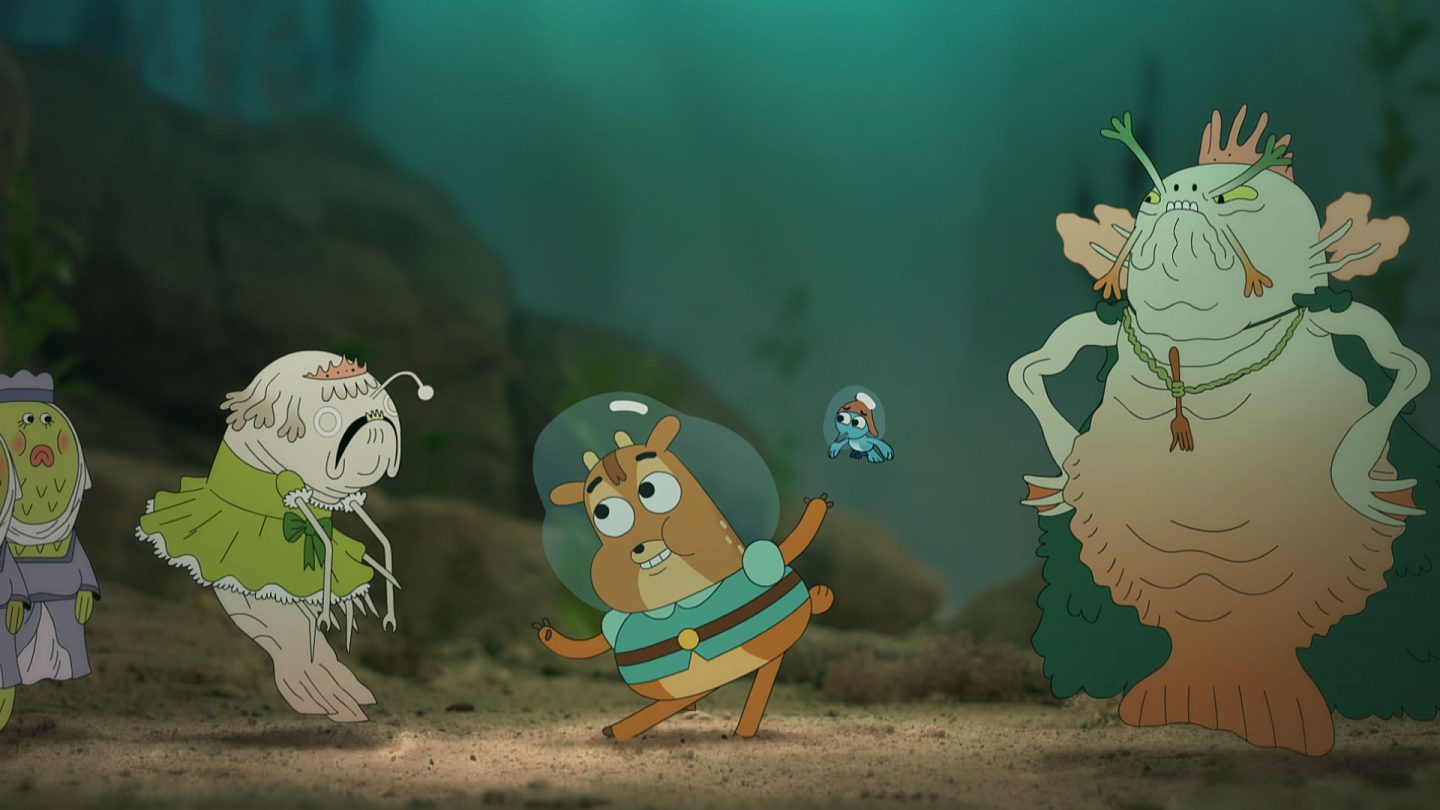
Says Bøving-Andersen, “It was very much an organic process where one idea led to another idea, and it really developed. So it was actually very satisfying. We didn’t feel like we wasted any work that we did with all those different pitches or different ideas. It benefited the final idea.”
Executive notes
Similar to the pitching process, the executive notes during production were “a conversation,” says Wallberg.
“We were actually surprised how much creative freedom we got,” continues Bøving-Andersen. “We thought it would be more controlled or restricted or something…Sometimes we had to change a few things, like a few jokes or something, but then we would find a compromise. So it didn’t feel like there was a big network, saying, ‘Do this, do that.’”
Small team, big trust
The whole production team in Copenhagen numbered around 50 people, but on a day-to-day basis, the team was small. “There was a lot of stuff that we figured out along the way, together,” Bøving-Andersen says. “We had a lot of trust in the people around us…We hired people that we knew would have the right taste for the project – people who we knew would understand our humor. … I think the artists had a lot of influence [on the final cartoons] compared to a very big production. I hope they feel the same.”
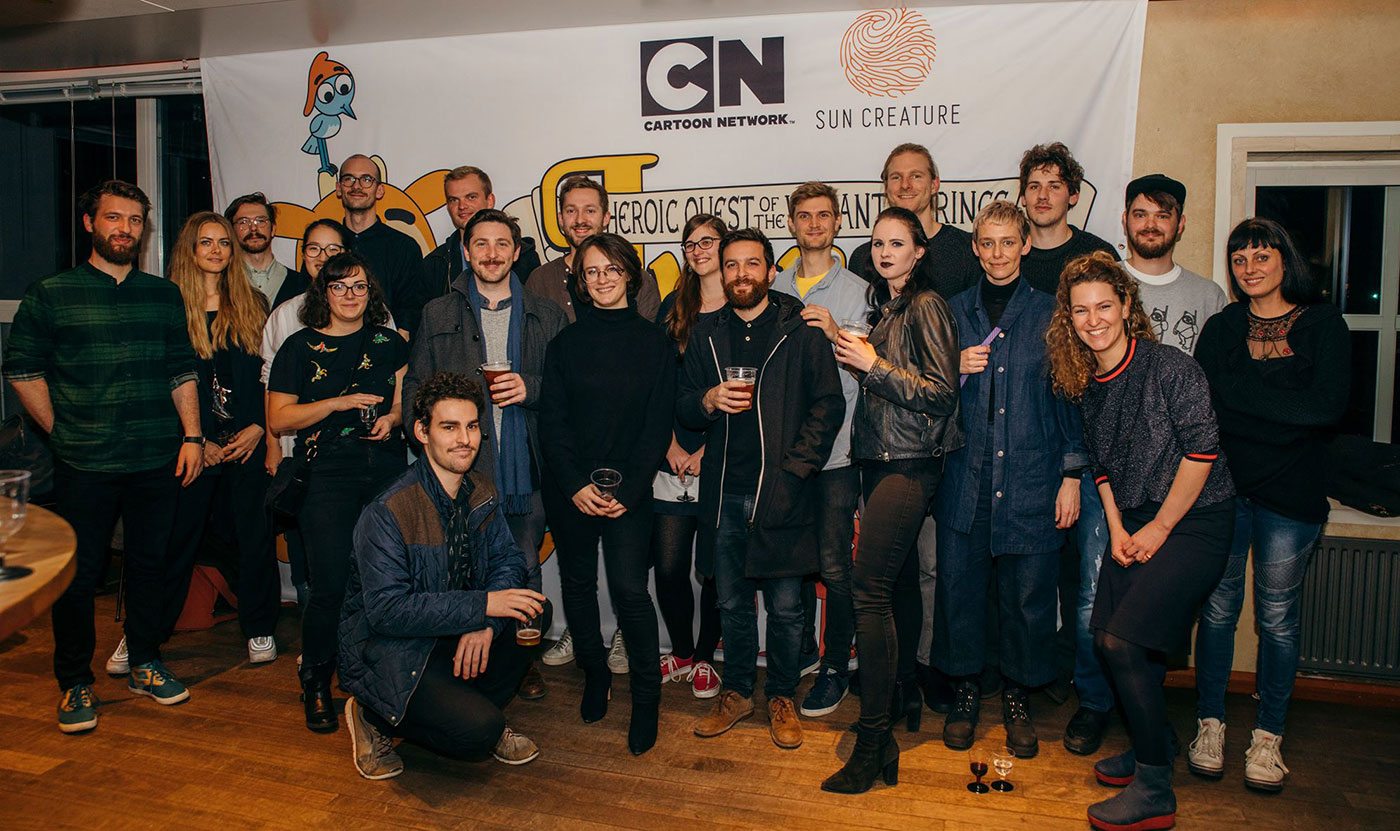
Being showrunners for the first time was a learning process. Luckily, the creative duo had some valuable directing role models during their prior work experiences: Kyle Balda on the Minions feature, Mic Graves on The Amazing World of Gumball, and Fx Goby at Nexus Productions.
What makes a great director? “It’s taking the time with each person,” Wallberg says. “All the really amazing directors I’ve worked with have that in common. They didn’t rush through things, even though they were probably so busy; they really took the time. It makes you feel appreciated as an artist.”

